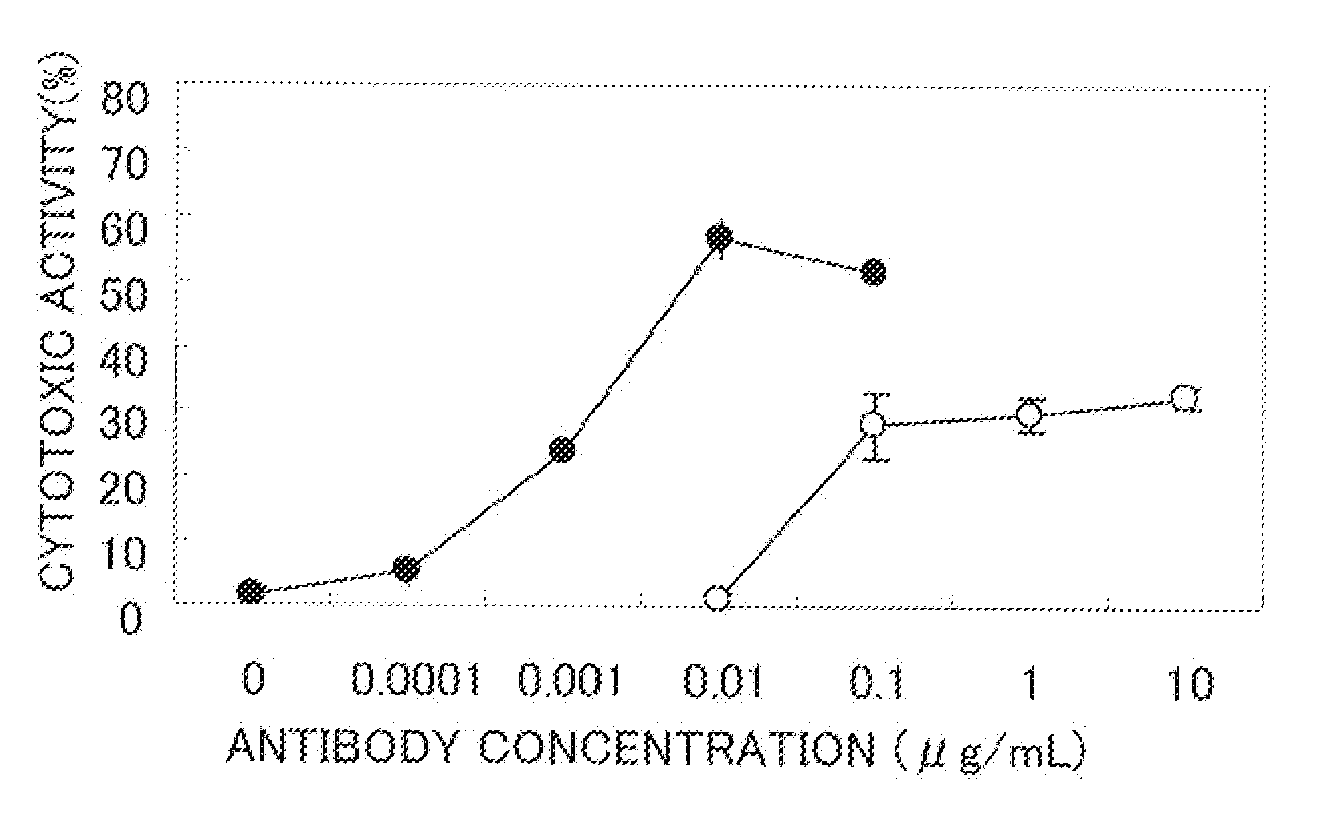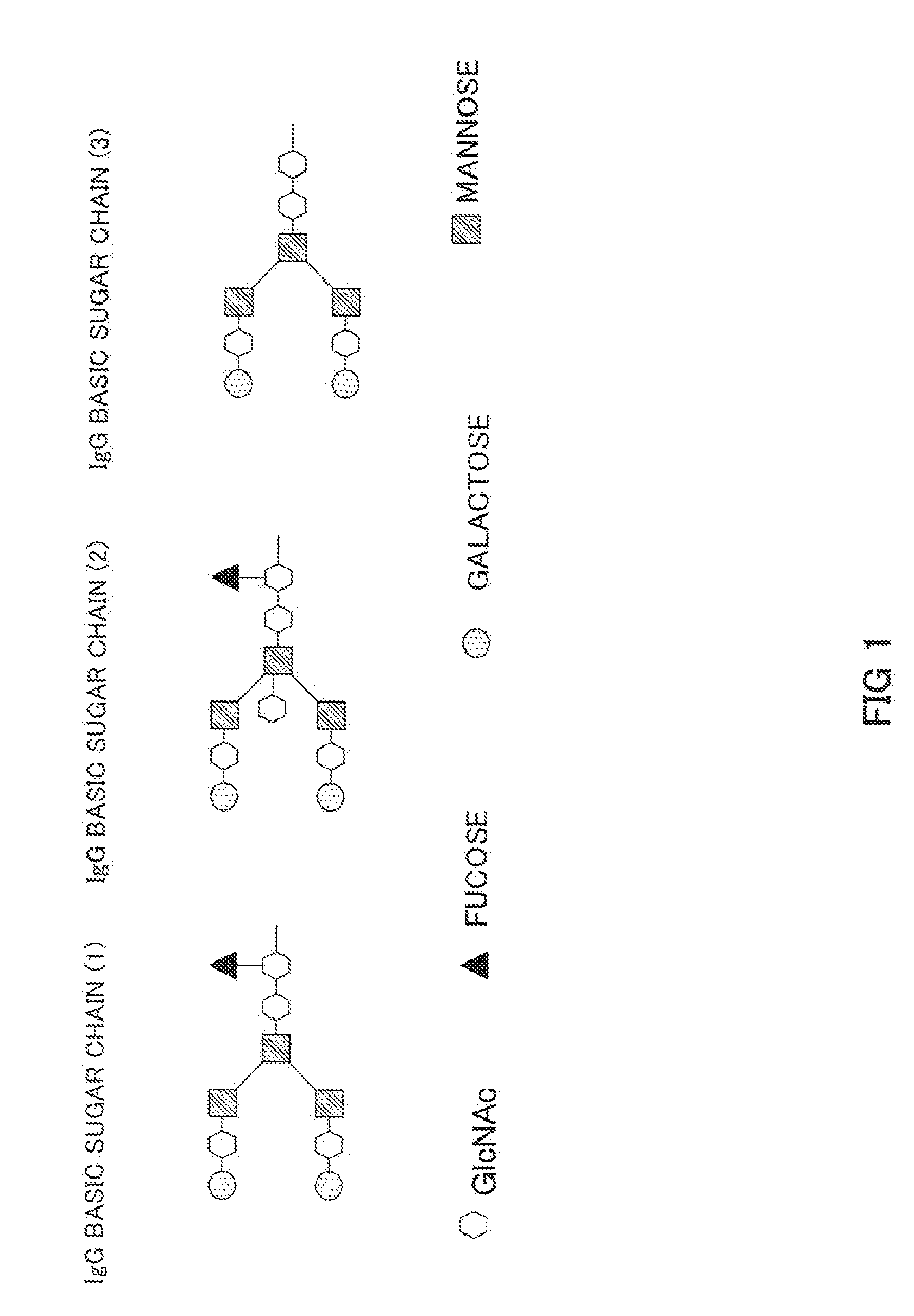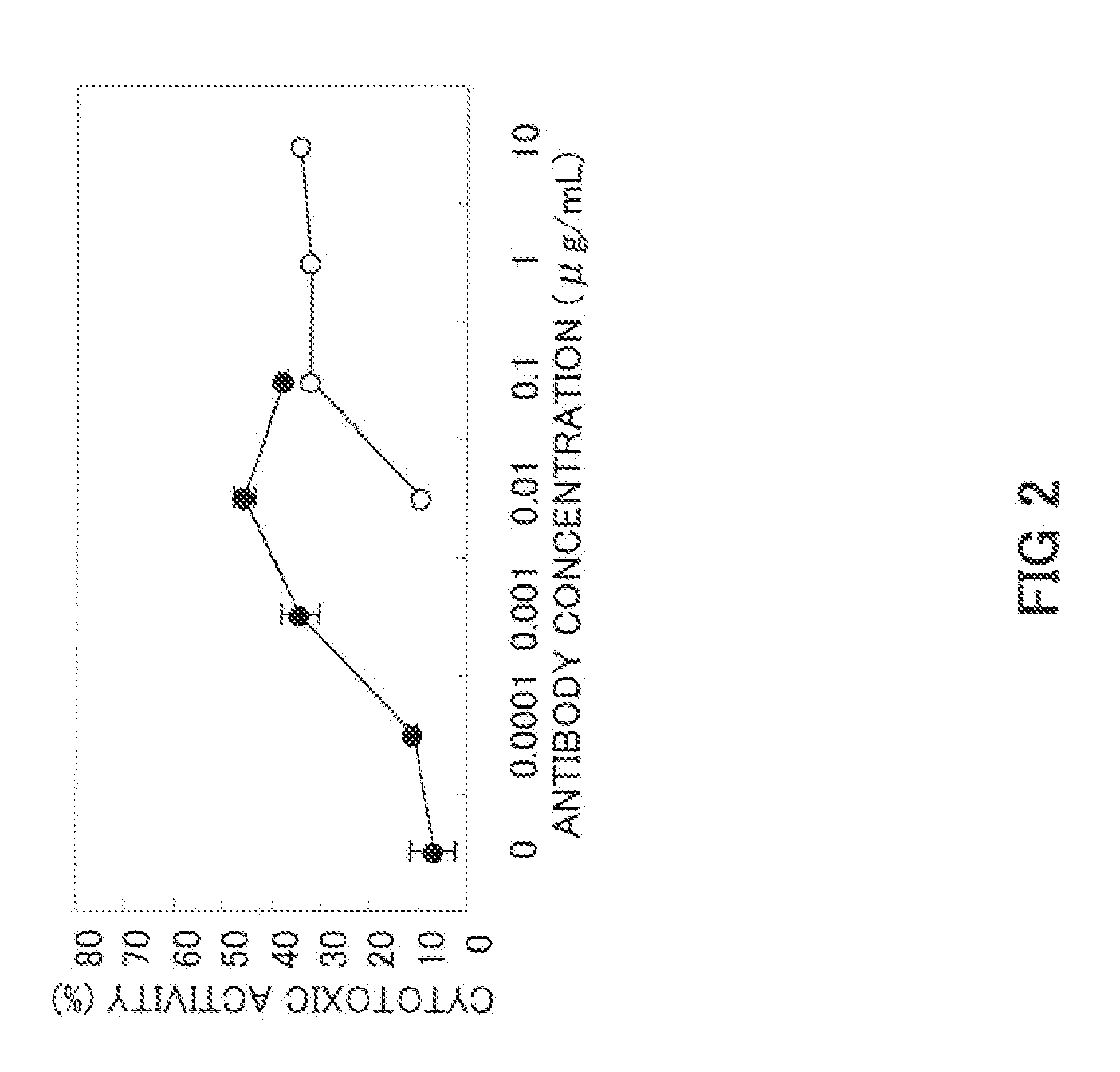Anti-Glypican 3 Antibody Having Modified Sugar Chain
a technology of glypican and antigen, applied in the field of antigen to glypican 3 antigen, can solve the problem of enhanced adcc activity of gpc3 antibody, and achieve the effect of enhancing adcc activity
- Summary
- Abstract
- Description
- Claims
- Application Information
AI Technical Summary
Benefits of technology
Problems solved by technology
Method used
Image
Examples
example 1
Preparation of Mouse Anti-GPC3 Antibody
[0063]A soluble GPC3 protein lacking the hydrophobic region of the C terminus (amino acids 564 to 580) was prepared as the immunizing protein for the preparation of the anti-GPC3 antibody for immunization. The MRL / MpJUmmCrj-lpr / lpr mouse (hereinafter referred to as MRL / lpr mouse, purchased from Charles River Japan), which is an autoimmune disease mouse, was used as the immunization animal. Immunization was started when the mice were 7 or 8 weeks old, and a preparation for initial immunization was adjusted to a dose of 100 μg / head soluble GPC3. An emulsion was prepared using Freund's complete adjuvant (FCA, Becton Dickinson), and injected subcutaneously. After a series of five immunizations, the final immunization dose was diluted in PBS to 50 μg / head, and injected intravenously via the caudal vein. On day 4 after the final immunization, the spleen cells were resected, mixed with mouse myeloma cells P3-X63Ag8U1 (hereinafter referred to as P3U1, ...
example 2
Preparation of Anti-GPC3 Antibody Mouse-Human Chimeric Antibody
[0066]The variable region sequences of the H chain and L chain of anti-GPC3 antibody GC33 were ligated to the constant region sequences of human IgG1 and κ chain. PCR was carried out using a synthetic oligonucleotide complementary to the 5′ terminal nucleotide sequence of the antibody H chain variable region having a Kozak sequence and a synthetic oligonucleotide complementary to the 3′ terminal nucleotide sequence having an NheI site. The PCR product thus obtained was cloned into pB-CH vector wherein the human IgG1 constant region has been inserted into pBluescript KS+ vector (Toyobo Co., Ltd.). The mouse H chain variable region and the human H chain (γ1 chain) constant region were ligated via the NheI site. The H chain gene fragment thus prepared was cloned into the expression vector pCXND3. Furthermore, PCR was carried out using a synthetic oligonucleotide complementary to the 5′ terminal nucleotide sequence of the L ...
example 3
Preparation of Low-Fucose Type Anti-GPC3 Chimeric Antibody
[0068]First YB2 / 0 (ATCC, CRL-1662) cells were cultured as the host cells in RPMI-1640 medium containing 10% FBS. Then 25 μg of the anti-GPC3 chimeric antibody expression vector prepared in Example 2 was introduced into the YB2 / 0 cells (ATCC CRT-1662) by electroporation at a concentration of 7.5×106 cells / 0.75 mL PBS(−) at 1.4 kV and 25 μF. After a recovery period of 10 min at room temperature, the cells treated by electroporation were suspended in 40 mL of RPMI-1640 medium containing 10% FBS. A 10-fold dilution was prepared using the same medium, and the cells were aliquoted into a 96-well culture plate at 100 μL / well. After culturing for 24 h in a CO2 incubator (5% CO2), Geneticin (Invitrogen Corp.) was added at a concentration of 0.5 mg / mL, and the cells were cultured for 2 weeks. Cell lines with a high level of chimeric antibody expression were screened using sandwich ELISA with anti-human IgG antibody, and cell lines stab...
PUM
| Property | Measurement | Unit |
|---|---|---|
| concentration | aaaaa | aaaaa |
| volume | aaaaa | aaaaa |
| volume | aaaaa | aaaaa |
Abstract
Description
Claims
Application Information
 Login to View More
Login to View More - R&D
- Intellectual Property
- Life Sciences
- Materials
- Tech Scout
- Unparalleled Data Quality
- Higher Quality Content
- 60% Fewer Hallucinations
Browse by: Latest US Patents, China's latest patents, Technical Efficacy Thesaurus, Application Domain, Technology Topic, Popular Technical Reports.
© 2025 PatSnap. All rights reserved.Legal|Privacy policy|Modern Slavery Act Transparency Statement|Sitemap|About US| Contact US: help@patsnap.com



